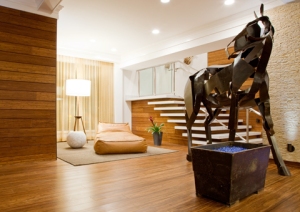 The Product:
The Product:Pangea Organics body care products (prices vary from $8 for bar soap to $40 for facial mask)
The Promise:
- No petrochemicals, sulfates, detergents, synthetic preservatives, artificial colors/fragrances or GMOs.
- Organic, fair trade (whenever possible), cruelty-free
- Molded fiber packaging made from 100% post-consumer newsprint without glues or dyes. Packaging has been impregnated with seeds from the same plants found in Pangea Organics products.
- A 100% wind-powered facility where the carpets are made from recycled soda bottles, the paint is non-VOC and the workers are paid a living wage.
We believe that the USDA only provides organic certification for food ingredients, so it would be nice if Pangea provided some information on how it knows its ingredients are organic. We've seen other cosmetics brands - particularly European ones - that contain the logo of one or more organic certification authorities, but Pangea seems to have foregone this step.
Other than that, the product and packaging seem to match the descriptions on the website and press materials.
The Experience:
The organic essential oils (sage and geranium in massage oil; blood orange, lavender and and Egyptian calendula) in Pangea products give them a truly heavenly scent.
We thoroughly liked all the Pangea cleansing products that we tried. The facial cleanser seemed to do an especially nice job on our 'problem' skin ($28), which perhaps explains why the cleanser won a Redbook MVP Beauty Award.
And cinnamon-lovers will be over the moon about the Malagasy Cinnamon Cassia with Cloves bar soap ($8). Incidentally, the soap not only smells great, but it looks like a work of art.
Inside the seeded boxes, Pangea packages all its products either in glass or #2 HDPE plastic, both of which are very recyclable. The caps on the shower gels and lotions are apparently also recyclable.
 As for the seeded boxes, they all contain sweet basil seeds except for the bar soap, which has the seed of a spruce tree.
As for the seeded boxes, they all contain sweet basil seeds except for the bar soap, which has the seed of a spruce tree.We love the idea of 100% post-consumer recycled packaging, especially when it comes with a bonus of free plant seeds! Not only does Pangea packaging reduce trash, it actually promotes plant life!
The packaging is so innovative that we almost feel silly complaining, but as advocate for eco-minded consumers everywhere, we wish that Pangea had put different types of seeds with different product boxes. If you buy six different Pangea products, you get six boxes impregnated with basil seeds. How about some oregano? Maybe a little rosemary?
(Also, it's not immediately clear from the boxes that you need to remove the label - which does appear to be held onto the box with a bit of glue - in order to access the full planting instructions.)
These are small quibbles. On the whole, Pangea seems to have a large number of laudable eco-friendly practices in place and to be producing some very nice skin and bodyare products.
These are small quibbles. On the whole, Pangea seems to have a large number of laudable eco-friendly practices in place and to be producing some very nice skin and bodyare products.
Where to buy:
Shop online at Pangea's own website or through other e-tailers like Amazon.com.
Prefer to try before you buy? Use the Pangea Store Locator to find a retailer near you.



